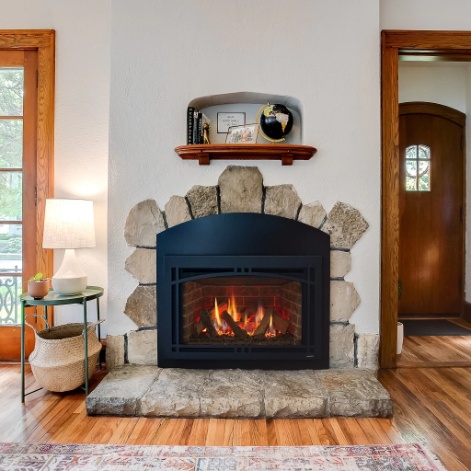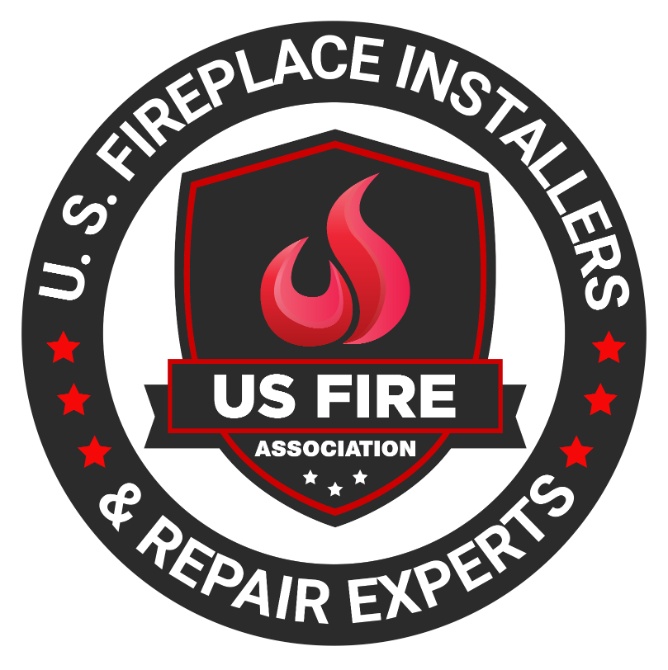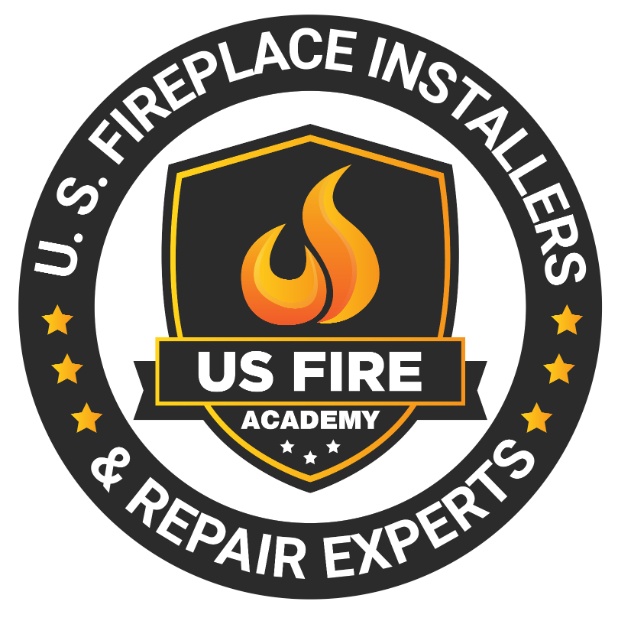Table of Contents
- 1 Some common signs and symptoms of gas fireplace leaks include:
- 2 The primary risks associated with gas fireplace leaks are:
- 3
- 4
- 5 Signs and Symptoms of Gas Fireplace Leaks
- 6 Potential Dangers of Gas Fireplace Leaks
- 7 What to Do if You Suspect a Gas Fireplace Leak?
- 8 How to Prevent Gas Fireplace Leaks?
- 9 Gas Fireplace Leak Symptoms and Detection
- 10 Taking Action and Safety Procedures
- 11 Managing the Home and Appliances
- 12 Frequently Asked Questions
Gas fireplaces are a popular and convenient way to enjoy the warmth and coziness of a fire in your home. However, it is important to be aware of the potential dangers of gas fireplace leaks. Understanding the signs and symptoms of a gas fireplace leak is crucial for ensuring the safety of yourself and your loved ones.
Gas fireplace leaks can occur due to various reasons such as faulty installation, aging components, or damage to the gas line. Being informed about the signs and symptoms of a gas fireplace leak can help you identify and address the issue promptly.
Some common signs and symptoms of gas fireplace leaks include:
- Unusual Smell: If you detect a strong smell of gas, similar to rotten eggs or sulfur, it could indicate a gas leak within the fireplace.
- Sooty Residue: Excessive soot buildup on the glass doors or surrounding areas of the fireplace may indicate incomplete combustion due to a gas leak.
- Yellow or Flickering Flames: Healthy gas flames should be blue with a steady burn. If you notice yellow flames or flickering flames, it could suggest a gas leak or airflow problem.
- Excessive Condensation: Excessive moisture or condensation on the interior of the fireplace or on the walls nearby might indicate a gas leak.
- Physical Symptoms: Gas leaks can cause physical symptoms such as headaches, dizziness, nausea, fatigue, or difficulty breathing.
The primary risks associated with gas fireplace leaks are:
- Fire Hazard: A gas leak combined with an ignition source can lead to a dangerous fire.
- Carbon Monoxide Poisoning: Incomplete combustion of gas produces carbon monoxide, an odorless and deadly gas that can cause severe illness or even death if inhaled in high concentrations.
- Oxygen Depletion: A gas leak can lead to oxygen depletion in the room, causing suffocation or other health issues.
If you suspect a gas fireplace leak, it is crucial to take immediate action for your safety and the safety of others.
Open windows and doors to ventilate the room, turn off the gas supply to the fireplace, evacuate the premises, and call for professional help.
To prevent gas fireplace leaks, regular maintenance and inspections are necessary.
Ensure proper ventilation by keeping air vents and chimney flues clean and unobstructed.
Installing a carbon monoxide detector near the fireplace and throughout your home can provide an early warning in case of a gas leak.
Related Article: Common Signs You Need Fireplace Repair
Gas fireplace leaks can present serious health risks and must be identified promptly.
Signs and Symptoms of Gas Fireplace Leaks
Identifying and addressing gas fireplace leaks promptly can help ensure the safety of your home and your family.
Unusual Smell
An unusual smell coming from your gas fireplace may indicate a gas leak. Here are some possible causes of this uncommon scent:
- Gas supply issue: If there is a problem with the gas supply, such as a leak in the gas line or a malfunctioning gas valve, it can lead to a noticeable odor.
- Pilot light issue: If the pilot light is not properly lit or is malfunctioning, it can produce a strong smell of gas.
- Gas burner issue: If there is a problem with the gas burner, such as a clogged or dirty burner, it can cause gas to accumulate and emit an unusual odor.
If you detect an uncommon smell coming from your gas fireplace, it is important to take immediate action to ensure your safety:
- Open windows and doors to ventilate the area and let fresh air in.
- Turn off the gas supply to the fireplace, if possible, to prevent further gas leakage.
- Evacuate the area and call for professional help. Do not attempt to fix the issue yourself as it can be dangerous.
To prevent gas fireplace leaks and the associated risks, regular maintenance and inspections are crucial. It is also important to ensure proper ventilation and consider installing a carbon monoxide detector for added safety.
Remember, if you detect an uncommon smell from your gas fireplace, prioritize your safety and seek professional assistance immediately.
Sooty Residue
A Common Indication of a Gas Fireplace Leak
Sooty residue is a common indication of a gas fireplace leak. This black or dark brown residue can be observed on the walls, ceilings, or surrounding areas of the fireplace. The accumulation of this residue is a result of incomplete combustion of natural gas or propane, leading to the production of soot.
- Dirty surfaces: If you come across a layer of black or dark brown residue on the walls, ceilings, or furniture near your gas fireplace, it is highly likely to be a sign of a leak.
- Discolored glass or logs: Sooty residue can also build up on the glass doors or logs of the fireplace, causing them to appear black or discolored.
- Unpleasant smell: Along with the visual presence of soot, you may also experience a strong, unpleasant smell similar to burning or rotten eggs.
- Poor air quality: Soot particles have the potential to decrease indoor air quality, which can result in respiratory issues, especially for individuals with pre-existing respiratory conditions.
Interestingly, the existence of sooty residue in relation to fireplaces dates back centuries. In medieval times, when fireplaces were commonly used for heating and cooking, people would regularly clean the chimneys to remove the buildup of soot. This practice proved effective in preventing chimney fires and ensuring a safer living environment. Nowadays, it is crucial to promptly address the presence of sooty residue in gas fireplaces to avoid potential dangers and maintain a clean and safe indoor environment.
Yellow or Flickering Flames
- Yellow or flickering flames in a gas fireplace can be a telltale sign of a potential gas fireplace leak.
- These flames may have a distinct appearance, different from the usual steady blue flames typically seen in a gas fireplace.
- If you notice yellow or flickering flames, it could indicate incomplete combustion, which can result from various issues such as a clogged burner, a dirty pilot light, or insufficient gas flow.
- Such a situation can lead to the production of carbon monoxide and an increased risk of fire.
In 2019, a suburban home reported a case where the residents noticed yellow and flickering flames in their gas fireplace. Alarmed by the unusual flames, they promptly contacted a professional for inspection. The inspection revealed a malfunctioning component in the fireplace, causing an incomplete combustion process. The professional expertly repaired the faulty part, thereby restoring proper gas flow and combustion. This incident serves as a reminder of the utmost importance of regular maintenance and inspections for gas fireplaces. It is crucial to prevent potential leaks and ensure the safety of homeowners.
Excessive Condensation
Excessive condensation can be a sign of a gas fireplace leak. When there is an excess of moisture buildup, it indicates an issue with the combustion process, which can lead to the production of additional moisture. This excess moisture then condenses on the interior surfaces of the fireplace or on nearby windows or walls.
Excessive condensation is not only an annoyance but also a potential hazard. It can cause damage to the interior of the fireplace and surrounding areas, promoting the growth of mold or mildew. It also suggests that the combustion process is inefficient, raising the possibility of harmful gases like carbon monoxide being released into the indoor air.
If you observe excessive condensation in or around your gas fireplace, it is crucial to address the problem promptly. Improve ventilation by opening windows and doors to allow the excess moisture to dissipate. Additionally, shut off the gas supply to the fireplace to prevent further leakage. It is of utmost importance to evacuate the area and seek professional assistance to accurately identify and repair the leak.
To prevent excessive condensation and gas fireplace leaks, it is essential to prioritize regular maintenance and inspections. Ensure proper ventilation by keeping the area around the fireplace free of obstacles. Consider installing a carbon monoxide detector as an extra layer of protection, providing alerts for the presence of harmful gases. By taking these precautions, you can guarantee the safety and functionality of your gas fireplace.
Physical Symptoms
Gas fireplace leaks can have serious consequences, and it’s important to be aware of the physical symptoms that may indicate a leak. These physical symptoms, including headaches, dizziness, nausea, fatigue, and difficulty breathing, should never be ignored. If you or anyone in your household experiences any of these symptoms, it’s crucial to take immediate action to ensure your safety.
One true story that illustrates the importance of recognizing physical symptoms is about a family who started experiencing headaches and dizziness whenever they used their gas fireplace. At first, they dismissed it as a coincidence, but they decided to investigate further. It turned out that there was a gas leak in the fireplace, and the family was being exposed to carbon monoxide. Realizing the seriousness of the situation, they immediately evacuated their home and called a professional for repairs. This incident highlights the significance of paying attention to physical symptoms and taking them seriously.
It’s essential to remember that any physical symptoms should never be ignored when it comes to gas fireplace leaks. These symptoms serve as a clear indication that something is wrong, and immediate action is necessary to prevent further harm. If you experience any of these physical symptoms, make sure to open windows and doors, turn off the gas supply, and evacuate the premises. Contacting a professional for repairs is crucial to ensure the issue is resolved safely. By being vigilant and taking prompt action, you can protect yourself and your loved ones from the potential dangers of gas fireplace leaks.
Related Article: The Top 7 Gas Fireplace Safety Tips
Potential Dangers of Gas Fireplace Leaks
Watch out for potential dangers when it comes to gas fireplace leaks. From fire hazards to carbon monoxide poisoning and oxygen depletion, these sub-sections will shed light on the risks associated with gas fireplace leaks. Stay informed to ensure the safety of your home and loved ones. Remember, prevention is key, so let’s dive into the facts and figures backed by credible sources to keep you well-informed and protected.
Fire Hazard
Gas fireplace leaks present a significant fire hazard that should not be underestimated. It is crucial to be fully aware of the potential dangers they pose. The accumulation of combustible gas caused by gas leaks can easily ignite and lead to a devastating fire. Damaged gas lines, loose connections, or faulty valves can be the root cause of a gas fireplace leak.
If you suspect a gas fireplace leak, immediate action is paramount to prevent a fire. Make sure to ventilate the area by opening windows and doors, and promptly turn off the gas supply to the fireplace. For everyone’s safety, evacuate the premises and contact professional help to assess and repair the leak promptly.
To proactively avoid gas fireplace leaks and the associated fire hazard, regular maintenance and inspections are essential. It is highly recommended to have your fireplace serviced by a professional technician at least once a year. Adequate ventilation within the room where the fireplace is installed is also important to prevent gas buildup. Installing a carbon monoxide detector can serve as an additional safety measure.
Always prioritize safety when dealing with gas fireplace leaks. If you detect any signs of a gas leak or detect a strong gas odor, evacuate the area immediately and seek professional assistance. Consistent maintenance and immediate attention to potential issues play a significant role in mitigating the fire hazard posed by gas fireplace leaks. Stay alert to ensure the safety of your home and loved ones.
Carbon Monoxide Poisoning
Carbon monoxide poisoning is a serious risk associated with gas fireplace leaks. When gas fireplaces malfunction or have leaks, they can release carbon monoxide gas into the surrounding area. Carbon monoxide is a colorless and odorless gas that is highly toxic and can be deadly in high concentrations.
Exposure to carbon monoxide can lead to various symptoms, including headache, dizziness, nausea, confusion, and even loss of consciousness. It is essential to be aware of the signs of carbon monoxide poisoning and take immediate action if you suspect a gas fireplace leak.
To prevent carbon monoxide poisoning, it is crucial to ensure regular maintenance and inspections of gas fireplaces. This includes checking for any leaks, cracks, or blockages in the flue or venting system. Proper ventilation is also essential to prevent carbon monoxide buildup. Installing a carbon monoxide detector in your home is strongly recommended to provide an early warning in case of gas leaks.
If you experience symptoms of carbon monoxide poisoning or suspect a gas fireplace leak, it is important to open windows and doors to allow fresh air to enter the space. Turn off the gas supply to the fireplace and evacuate the area immediately. Contact a professional for help and repairs as soon as possible. Remember to never attempt to fix gas fireplace issues yourself, as it should be handled by trained professionals.
Being aware of the risks and taking proactive measures can help ensure your safety and the safety of your household when it comes to gas fireplace leaks and carbon monoxide poisoning.
Oxygen Depletion
Oxygen depletion is a potential danger that can arise from gas fireplace leaks. When a gas fireplace is not properly ventilated, it has the ability to deplete the oxygen in the surrounding area, leading to a decrease in oxygen levels. This situation can be hazardous, particularly in enclosed spaces, as it can result in a lack of oxygen necessary for breathing.
If oxygen depletion occurs, individuals may experience various symptoms including dizziness, shortness of breath, fatigue, confusion, and even loss of consciousness. Promptly addressing oxygen depletion is crucial to ensure the safety of everyone in the vicinity.
If you suspect oxygen depletion due to a gas fireplace leak, it is imperative to take immediate action. Opening windows and doors to allow fresh air to enter the space is essential. Additionally, it is crucial to turn off the gas supply to the fireplace in order to prevent further consumption of oxygen. In severe cases, evacuating the area and seeking professional assistance to address the gas fireplace leak may be necessary.
To prevent oxygen depletion, it is vital to ensure proper ventilation when using gas fireplaces. Regular maintenance and inspections should also be carried out to detect any potential leaks or issues with ventilation. Installing a carbon monoxide detector can provide an additional layer of safety, as it can alert you to the presence of harmful gases in the air.
Oxygen depletion is a serious concern when it comes to gas fireplace leaks. Recognizing the signs, taking immediate action, and implementing preventive measures are key to ensuring the safety and well-being of your household.
What to Do if You Suspect a Gas Fireplace Leak?
If you suspect a gas fireplace leak, quick action is crucial to ensure everyone’s safety. In this section, we’ll discuss what to do in such a situation. From practical steps like opening windows and doors to protect against potential build-up, to shutting off the gas supply as a precautionary measure, we’ll equip you with the necessary knowledge. We’ll emphasize the importance of evacuating immediately and contacting professional help for expert assistance. Don’t underestimate the gravity of a gas fireplace leak—stay informed and prepared.
Open Windows and Doors
When facing a suspected gas fireplace leak, one crucial measure to take is to open windows and doors to naturally ventilate the area. This step not only allows fresh air to enter the room and provide ventilation but also serves to create a pathway for the gas to escape leading to the outside. It is essential to ensure that windows and doors are opened in a safe manner, prioritizing safety to avoid accidents or injuries. If a gas leak is suspected, it becomes imperative to promptly and responsibly take action to protect yourself and others. Remember, if necessary, prioritize your safety and evacuate the premises.
A true anecdote illustrates the importance of open windows and doors when dealing with a potential gas leak. Once, a couple noticed an unusual smell emanating from their living room where their gas fireplace was located. Concerned about a potential gas leak, they instinctively opened all the windows and doors in the room, allowing fresh air to circulate and creating a pathway for the gas to escape. They followed proper safety procedures and promptly contacted a professional for assistance. Subsequently, it was revealed that there was indeed a gas leak in their fireplace system. Thanks to their rapid response and the incorporation of open windows and doors, they successfully averted any potential dangers, ensuring the safety of their home and family.
Turn Off the Gas Supply
When dealing with a gas fireplace leak, it is essential to immediately turn off the gas supply to ensure safety. Here are the steps to follow:
- Locate the gas supply valve. It is typically situated near the fireplace or in a utility room.
- Rotate the valve a quarter turn in either direction to shut off the gas supply. This can be done manually.
- Ensure that the valve is fully closed by checking the position of the lever or handle. It should be perpendicular to the gas pipe.
- Once the gas supply is turned off, avoid using any open flames, electrical switches, or devices that can produce sparks.
- Open windows and doors to allow ventilation and release any gas buildup.
If you suspect a gas fireplace leak, turning off the gas supply is an essential step to prevent potential dangers and ensure the safety of your home and everyone in it. It is important to remember that gas leaks can be hazardous, and professional help should be sought immediately. Contact a certified technician to inspect and repair the fireplace.
Evacuate and Call for Professional Help
- When dealing with a gas fireplace leak, your first priority should always be safety. If you suspect a gas fireplace leak, it is crucial to immediately evacuate the area to ensure your own safety as well as the safety of others.
- After evacuating, it is important to call for professional help. Contact a qualified gas technician or reach out to your local utility company for assistance with addressing the gas fireplace leak.
The evacuation of the area plays a vital role in minimizing the potential dangers that can arise from gas fireplace leaks. By contacting a professional, you can ensure that the issue is handled and resolved by someone with the necessary expertise and knowledge.
How to Prevent Gas Fireplace Leaks?
Regular Maintenance and Inspections
- Regular maintenance and inspections are essential to ensure the safety and functionality of your gas fireplace.
- Make it a habit to regularly clean and inspect the burner, pilot assembly, and gas logs to remove debris or buildup.
- During inspections, check the gas supply line for any leaks or damage. Immediate attention is necessary if cracks or leaks are detected.
- Don’t forget to examine the venting system to ensure proper airflow and ventilation. Any blockages or obstructions can affect the fireplace’s performance and pose a safety risk.
- To guarantee your safety, test the carbon monoxide detector regularly to ensure its proper functioning. Carbon monoxide leaks can be fatal, so having a working detector is crucial.
- Always inspect the gas valve and connections for signs of wear or damage. If any issues are noticed, it’s best to seek professional assistance.
- Keep the area surrounding the fireplace clean and free from any flammable materials. This preventive measure helps avoid potential fires or accidents.
- Perform a visual inspection of the fireplace’s exterior to identify any cracks or damage. Address any issues promptly to prevent further damage or safety hazards.
Ensure Proper Ventilation
Proper ventilation is crucial when it comes to gas fireplaces to ensure the safety of your home. It is important to ensure that there is enough fresh air circulating in the room where the gas fireplace is installed to prevent the buildup of harmful gases and maintain good air quality. Here are some key factors to consider for ensuring proper ventilation:
1. Adequate air supply: Make sure to open windows or use a mechanical ventilation system to achieve sufficient air circulation in the room where the gas fireplace is installed.
2. Clearance around the fireplace: It is essential to maintain enough space around the fireplace to allow for proper airflow. To avoid blocking air circulation, keep furniture, curtains, and other objects away from the fireplace.
3. Ventilation systems: Some gas fireplaces require a venting system for safe removal of combustion byproducts. It is crucial to follow the manufacturer’s instructions and have the venting system properly installed.
4. Regular maintenance: It is important to keep the fireplace and its components clean and free from dust and debris. Regularly inspect and clean the vents to prevent any blockages that could hinder proper ventilation.
5. Monitor carbon monoxide levels: Installing a carbon monoxide detector in the vicinity of the gas fireplace is essential to alert you of any potential leaks. Remember to test the detector regularly and replace the batteries as needed.
By ensuring proper ventilation, you can enjoy the warmth and ambiance of your gas fireplace while keeping your home safe and maintaining good air quality.
Install a Carbon Monoxide Detector
When it comes to ensuring safety in your home, one important step is to install a carbon monoxide detector. Here are the steps to follow:
- Choose the right location: Install a carbon monoxide detector near sleeping areas and on every level of your home.
- Follow the manufacturer’s instructions: Read the instructions carefully and install a carbon monoxide detector as directed.
- Test regularly: Ensure the installed carbon monoxide detector is functioning correctly by testing it regularly.
- Replace batteries: As recommended by the manufacturer, replace the batteries of the carbon monoxide detector at least once a year.
- Replace the unit: When a carbon monoxide detector reaches the end of its 5-7 year lifespan, make sure to replace it.
Pro-tip: Consider interconnected carbon monoxide detectors. Interconnected detectors communicate with each other, so if one alarm is triggered, all the alarms in your home will sound, providing an early warning for everyone in the house.
Gas Fireplace Leak Symptoms and Detection
Gas fireplace leaks can pose serious risks to your home and health. In this section, we’ll dive into the symptoms and detection methods for gas fireplace leaks. From recognizing the signs of a gas leak to using soapy water for a simple bubble test and the importance of carbon monoxide detectors, we’ll equip you with the necessary knowledge to keep your home safe. Stay informed and take proactive measures to prevent potential hazards.
Recognizing the Signs of a Gas Leak
It is crucial to recognize the signs of a gas leak for the safety of your home and family. Here are some key indicators that can help you identify a gas leak:
- One of the most common signs of a gas leak is a distinct odor, often described as a rotten egg smell. Natural gas is odorless, but an additive called mercaptan is added to give it a strong scent for easy detection.
- If you notice black, powdery residue around your gas appliances or on walls near them, it could be a sign of a gas leak. This residue is a result of incomplete combustion.
- Gas appliances normally produce a blue flame. If you observe yellow flames or flickering flames instead, it may indicate a gas leak.
- A gas leak can cause an increase in humidity, leading to excessive condensation on windows, walls, or other surfaces.
- Symptoms like dizziness, nausea, headaches, fatigue, or difficulty breathing can be indications of a gas leak. These symptoms may worsen when you are near the affected area.
It is important to take immediate action if you recognize any of these signs. Gas leaks can be extremely dangerous and pose risks such as fire hazard, carbon monoxide poisoning, and oxygen depletion. If you suspect a gas leak, follow safety procedures, open windows and doors for ventilation, turn off the gas supply, evacuate the area, and call for professional help.
In 2020, a gas leak in a residential building in the city resulted in a devastating explosion. Tragically, several lives were lost, and numerous homes were destroyed. Investigators later determined that the leak went undetected for weeks due to unawareness of the warning signs. This incident highlighted the importance of recognizing the signs of a gas leak and taking immediate action to prevent such catastrophic accidents.
Using Soapy Water for a Bubble Test
- Using Soapy Water for a Bubble Test: Mix a solution of soapy water by combining water and a small amount of liquid dish soap in a spray bottle.
- Ensure that the gas fireplace is turned off before starting the test.
- Dip a sponge or cloth into the soapy water solution.
- Apply the soapy water solution to the gas connections, including the valve, joints, and tubing.
- Observe for any bubbles forming on the surface of the connections.
- If bubbles start to appear, it indicates a gas leak.
- Take note of the location or areas where the bubbles are forming.
- This test can be repeated for other gas appliances in the home as well.
Fact: Using Soapy Water for a Bubble Test is a simple and effective way to detect gas leaks in appliances and connections. The soap creates a layer of bubbles that helps in identifying even the smallest gas leaks. It is important to perform regular checks using this method to ensure the safety of your gas fireplace and other gas appliances in the home.
Using Carbon Monoxide Detectors
Using carbon monoxide detectors is crucial in detecting potential gas fireplace leaks in your home. These detectors are designed to monitor the levels of carbon monoxide in the air and alert you if there are any dangerous levels present.
When using carbon monoxide detectors, it is important to place them on each level of your home, especially near sleeping areas. Make sure to follow the manufacturer’s instructions on installation and maintenance. Regularly check the batteries and test the detectors to ensure they are functioning properly.
Carbon monoxide is a colorless and odorless gas that can be produced by gas fireplaces. It is highly toxic and can lead to serious health issues or even death when inhaled in high concentrations. Using carbon monoxide detectors can help you detect a leak early and take immediate action to protect yourself and your family.
Remember, carbon monoxide detectors should never be used as a substitute for proper maintenance and inspection of gas fireplaces. It is essential to have your fireplace regularly inspected by a professional to prevent leaks and ensure its safe operation.
Fact: According to the Centers for Disease Control and Prevention, carbon monoxide poisoning is responsible for over 400 deaths in the United States each year. Using carbon monoxide detectors is a simple and effective way to protect your family from this silent danger.
Home Methane Detectors
When it comes to detecting gas fireplace leaks in your home, home methane detectors, also known as home methane gas detectors, can be a valuable tool. Here are a few reasons why:
- Reliable detection: Home methane detectors are specifically designed to detect the presence of methane gas, which is often associated with gas leaks. They can quickly alert you if there is a potential leak in your gas fireplace or other gas appliances in your home.
- Increased safety: By having a home methane detector installed, you can enhance the safety of your home and family. These detectors can detect even small amounts of methane gas, helping you identify and address any potential leaks promptly.
- Easy installation: Home methane detectors are usually easy to install, making them a convenient option for homeowners. You can typically place them near your gas fireplace or any other gas appliances in your home for effective monitoring.
- Peace of mind: Having a home methane detector gives you peace of mind knowing that you have an extra layer of protection against gas leaks. It allows you to monitor the air quality in your home and take immediate action if necessary.
Pro-tip: Remember to regularly check and maintain your home methane detector to ensure its proper functioning and accuracy in detecting gas leaks.
Taking Action and Safety Procedures
Gas fireplace leaks can be a serious concern, but taking appropriate action and following safety procedures can help safeguard your home and loved ones. In this section, we will explore different steps you can take in response to a gas fireplace leak. From turning off the gas using a quarter-turn ball valve, to reaching out to the local utility company for assistance, and contacting a professional for repairs, we’ll cover the crucial actions you need to know to ensure safety and prevent further risks. Stay informed and prepared to handle any gas fireplace leak effectively.
Turning Off the Gas using a Quarter Turn Ball Valve
When it comes to turning off the gas using a quarter turn ball valve on a gas fireplace, here are the steps to follow:
- Locate the gas supply line connected to the fireplace.
- Identify the quarter turn ball valve, usually located near the gas supply line.
- Ensure the valve handle is in a perpendicular position to the gas supply line, indicating that the gas is open.
- To turn off the gas, simply rotate the valve handle a quarter turn in a clockwise direction until it is parallel to the gas supply line.
- Check the handle position to confirm that the gas is now turned off.
It is important to note that turning off the gas using a quarter turn ball valve should only be done in emergency situations or when you suspect a gas leak. If you are unsure or uncomfortable handling the valve, it is recommended to evacuate and call for professional help.
Calling the Local Utility Company
If you suspect a gas fireplace leak, it is crucial to calling the local utility company immediately.
Contacting a Professional for Repairs
When you suspect a gas fireplace leak, it is crucial to contact a professional for repairs. Here are the steps to follow:
- Ensure your safety by evacuating the area and opening windows and doors to allow for proper ventilation.
- Turn off the gas supply to the fireplace immediately to prevent any further leakage.
- Contact a professional who specializes in gas fireplace repairs – such experts are necessary to address the issue.
- Provide the professional with as much information as possible about the signs and symptoms you noticed, as this will help them diagnose the problem more efficiently.
- Follow any additional instructions or recommendations given by the professional. They may need to inspect other parts of your fireplace or conduct further testing to ensure there are no other issues.
- Do not attempt to repair the gas fireplace yourself if you are not trained or experienced in doing so. Gas leaks can be extremely dangerous and should only be handled by professionals.
It is crucial to contact a professional for repairs to ensure the safe and efficient functioning of your gas fireplace. They will be able to address any potential dangers and make the necessary repairs to protect your home and family.
Managing the Home and Appliances
When it comes to managing our homes and appliances, it’s crucial to stay vigilant and informed about potential risks. In this section, we’ll explore different aspects of maintaining a safe home environment, covering topics such as properly operating gas appliances, regular maintenance, and ensuring proper ventilation. By understanding and implementing these practices, we can ensure the safety and efficiency of our gas appliances. Let’s dive in and discover key tips for effectively managing our homes and keeping our loved ones protected.
Properly Operating Gas Appliances
Ensuring the proper operation of gas appliances is essential to ensure safety and avoid potential hazards. Here are some steps to follow:
- Regularly inspect the gas appliances for any signs of damage or malfunction to ensure that they are operating properly.
- Ensure that all gas appliances are properly installed and vented in accordance with the manufacturer’s instructions to guarantee their proper operation.
- Keep the area around gas appliances clean and free from any flammable materials to reduce the risk of accidents.
- Always adhere to the manufacturer’s guidelines for the operation and maintenance of gas appliances to ensure their proper functioning.
- Check for any unusual smells or sounds when operating gas appliances. If you detect any gas leaks, follow the appropriate safety procedures to address the issue promptly.
- Properly operate gas appliances by turning them on and off according to your needs. Avoid leaving them running unattended for extended periods to prevent any potential problems.
- Regularly clean and maintain gas appliances to ensure optimal performance and prevent any build-up of dirt or debris that may affect their operation.
- If you notice any issues or abnormalities with the operation of gas appliances, immediately contact a professional technician for inspection and repairs to ensure their proper functioning.
Ensuring that gas appliances are properly operated is crucial for the safety and well-being of everyone in the household. By following these steps, you can minimize the risk of gas leaks and other potential dangers associated with gas appliances.
Regular Maintenance of Gas Appliances
Regular maintenance of gas appliances is essential to ensure their safe and efficient operation. Here are some steps to follow:
- Inspect the appliance regularly for any signs of damage or wear.
- Clean or replace the filters as recommended by the manufacturer to prevent clogs and improve airflow.
- Check the burner for any debris or blockages that could affect its performance.
- Inspect the gas lines and connections for any signs of leaks or corrosion.
- Test the safety features of the appliance, such as the flame sensor and carbon monoxide detector, to ensure they are functioning properly.
- Remove any dust or dirt that may have accumulated on the appliance, as this can affect its efficiency.
- If you notice any issues or unusual behaviors, such as strange odors or unusual noises, contact a professional for a thorough inspection and repair.
By performing regular maintenance on your gas appliances, you can prolong their lifespan, improve their energy efficiency, and most importantly, ensure the safety of your household.
Ensuring Proper Ventilation for Gas Appliances
- Check for obstructions: To ensure proper ventilation for gas appliances, regularly inspect the vents and flues of your gas appliances to make sure they are free from any debris or blockages that could impede the flow of air.
- Keep vents clear: It is important to avoid placing objects near or in front of the vents or registers of your gas appliances. This will ensure unrestricted airflow and contribute to proper ventilation.
- Proper installation: To ensure proper ventilation, make sure that gas appliances are installed according to the manufacturer’s instructions, including the proper placement of vents and flues.
- Regular maintenance: Proper ventilation can be maintained by scheduling regular maintenance for your gas appliances. This includes professional inspections and cleanings to keep them operating efficiently and safely.
- Adequate ventilation: It is crucial to have sufficient ventilation in the area where your gas appliances are located. This can be achieved by opening windows or using exhaust fans to enhance air circulation and ensure proper ventilation.
By following these steps, you can ensure that your gas appliances have proper ventilation. This is crucial for their safe and efficient operation.
Remember, gas appliances should never be operated in areas with inadequate ventilation, as this can lead to an increased risk of carbon monoxide poisoning. If you suspect a gas leak or have any concerns about the ventilation of your gas appliances, it is important to seek professional help immediately.
Frequently Asked Questions
1. What are the telltale signs of a gas fireplace leak?
Some signs of a gas fireplace leak include a foul smell like rotten eggs or hissing sounds. Leak signs also include movement of debris or dust and dying plants near gas lines. Physical symptoms may include headaches, nausea, dizziness, confusion, difficulty breathing. In severe cases physical symptoms are unconsciousness and brain damage.
2. What should I do if I suspect a gas leak in my gas fireplace?
If you suspect a gas leak in your gas fireplace, it is important to leave the house immediately. Call the utility company or 911 for assistance. Do not try to fix the issue yourself.
3. How can I test if my gas valve is leaking?
To test if your gas valve is leaking, create a soapy mixture with dishwashing soap and water. Apply the mixture to the valve and look for bubbles. Bubbles indicate a gas leak. Small bubbles indicate a small leak, while large bubbles indicate a major leak.
4. What are the common causes of a gas valve leak in a gas fireplace?
Common causes of a gas valve leak can include damage to the valve and wear and tear over time. It can also be a wrong-sized valve or a worn or stripped valve. It is important to address any gas valve leaks promptly to avoid potentially dangerous situations.
5. Can I fix a small gas valve leak myself?
If you identify a small gas valve leak tighten the connection with an adjustable wrench. If the leak persists or if you encounter a major leak, call a professional for assistance. Contact Dreifuss Fireplaces today.
6. How can I prevent gas valve leaks in my gas fireplace?
To prevent gas valve leaks, it is advisable to run a DIY test regularly using a soapy water mixture. Avoid over-tightening the valve and be cautious when moving or lifting heavy items near the valve. Installing carbon monoxide detectors in your home can also enhance safety measures. Additionally, Fireplace Doors Online carries replacement valves and valve kits if needed.
Latest Articles

What Is An NG (Natural Gas) Indicator And Why You Need It For Your Fireplace
Table of Contents1 Understanding Natural Gas Fireplaces2 What is an NG Indicator?3 Importance of NG Indicators for Safety4 Types of NG Indicators5 Installation and Maintenance of NG Indicators6 Signs of a Faulty NG Indicator7 Frequently Asked Questions Natural gas fireplaces are a favored option among numerous homeowners due to their convenience and effectiveness. But, what is an NG (Natural Gas) indicator and why you need it for your fireplace? It is imperative to comprehend how they function and the significance of having an NG (Natural Gas) indicator for safety purposes. This article delves into the definition and significance of NG indicators. We will discuss the potential hazards associated with the absence of one and the various types of indicators accessible. Also, we will discuss installation and maintenance recommendations, and methods to recognize and rectify issues with malfunctioning indicators. Stay well-informed and ensure the safety of your home by referring to this exhaustive guide. Understanding Natural Gas Fireplaces Natural gas fireplaces serve as an efficient and convenient heating option for numerous households. They utilize natural gas as a fuel source to deliver consistent warmth and ambiance. How They Work and Why They Need NG Indicators The operation of natural gas fireplaces involves igniting natural gas to generate heat. This process requires diligent monitoring to ensure both safety and efficiency, a task facilitated by the use of NG indicators. NG indicators play a critical role in detecting potential gas leaks. They enable residents to promptly address and mitigate any associated hazards. Through continuous monitoring of gas levels and providing timely warnings and alerts, NG indicators uphold a secure indoor environment. It is imperative to ensure that these indicators function properly to facilitate the effective operation of natural gas fireplaces. This helps mitigate the inherent risks linked to gas leaks. What is an NG Indicator? An NG indicator is a specialized device equipped with advanced sensors and technology. It is specifically designed to detect natural gas leaks and monitor gas pressure in appliances, such as fireplaces. Definition and Purpose The NG indicator functions as a detector that monitors gas appliances for potential leaks. It provides essential functionality to ensure safety in households utilizing natural gas. These detectors play a crucial role in protecting residences by notifying occupants of dangerous gas leaks long before they escalate into perilous situations. Through continuous monitoring of gas levels in the vicinity, NG indicators offer an additional layer of protection. This is particularly important in properties that rely on gas-operated fireplaces or stoves. These devices not only help avert potential disasters but also enhance the overall peace of mind of homeowners. They assure them that their living spaces are equipped with reliable safety features. Importance of NG Indicators for Safety Natural gas indicators are essential for maintaining safety in households equipped with natural gas appliances. These devices serve as a proactive measure to promptly detect gas leaks. This offers homeowners a sense of security and assurance. Potential Dangers of Not Having an NG Indicator The absence of an NG indicator in residences equipped with natural gas appliances can pose significant hazards. This includes the risk of undetected gas leaks , carbon monoxide poisoning , and pilot outages that may lead to dangerous situations. These potential risks can profoundly impact indoor air quality. They directly influence the health and safety of individuals residing in the household. Undetected gas leaks can go unnoticed, gradually permeating the air and creating a potentially explosive environment. Insufficient ventilation from undetected exposure to carbon monoxide can lead to serious health complications. These range from mild symptoms such as dizziness to fatal poisoning. Without proper monitoring from an NG indicator, families are left susceptible to these concealed threats. This underscores the critical importance of implementing proactive measures to mitigate such risks. Types of NG Indicators Indicators for Natural Gas (NG) are available in diverse types. Each presents distinct detection capabilities tailored to specific requirements, encompassing both manual and automated alternatives. Manual vs. Automatic Indicators Manual NG indicators require user intervention for monitoring gas levels and identifying leaks. On the other hand, automatic indicators employ sophisticated technology to deliver continuous, real-time monitoring. This heightened efficiency and oversight enhance safety protocols. Conventional manual indicators rely on individuals to physically inspect and evaluate gas levels periodically. This renders them more susceptible to human errors. Conversely, automatic indicators feature sensors capable of promptly detecting even the most minute fluctuations in gas levels. This establishes a more dependable and precise monitoring mechanism. Automatic indicators can activate alerts and shut-off systems upon detecting a leak. This ensures immediate action to avert potential hazards. This advanced technology enhances safety protocols and instills a sense of command and assurance among users. Installation and Maintenance of NG Indicators The reliable and accurate performance of NG indicators necessitates proper installation and consistent maintenance. This often entails professional installation and adherence to recommended service guidelines. Proper Installation and Regular Maintenance Tips The proper installation of NG indicators involves adhering to the specifications in the user manual. Maintenance protocols entail strict adherence to a predetermined maintenance schedule to ensure sustained operational efficiency. During the installation phase, it is imperative to verify that the NG indicators are securely affixed in the designated location as stipulated by the manufacturer. Crucial steps include confirming power source compatibility and ensuring proper grounding of the device to optimize performance. Calibration of the indicator must be executed meticulously to ensure precise readings. Regarding maintenance, essential practices include regular inspection for signs of wear, thorough cleaning of the indicator components, and routine functionality tests. By allocating time to a consistent maintenance regimen, the NG indicator can operate with optimal efficiency over an extended duration. Signs of a Faulty NG Indicator Recognizing indicators of a malfunctioning NG indicator is essential for upholding safety and performance standards. Inaccuracies and detection issues can undermine the efficacy of these devices. Identifying and Addressing Issues The process of identifying and addressing issues related to NG (natural gas) indicators requires a systematic troubleshooting approach. This ensures their optimal performance

What You Need To Know About Gas Log Set Safety And Installation Considerations
Table of Contents1 Understanding Gas Log Sets2 Safety Considerations for Gas Log Sets3 Installation Guidelines for Gas Log Sets4 Maintaining and Troubleshooting Gas Log Sets5 Frequently Asked Questions Gas log sets are a favored option among homeowners seeking to enjoy the comfort and atmosphere of a conventional fireplace without the inconvenience of wood. This article tells you what you need to know about gas log set safety and installation considerations. Before incorporating one into your residence, it is imperative to understand the safety considerations associated with their use. This discussion delves into the potential hazards linked with gas log sets. It presents crucial precautions to uphold the safety of your home. Also, it outlines proper installation procedures and offers insight into common errors to avoid. Finally, it provides advice on maintenance and troubleshooting. Gain comprehensive knowledge on gas log set safety and installation considerations. Understanding Gas Log Sets Comprehending gas log sets is essential for individuals seeking to elevate their fireplace experience, and for gas lag set safety and installation. These heating appliances can operate on either natural gas or propane. In addition, they are available in a range of styles, including vented, ventless, and vent-free options. They provide an array of benefits and customization opportunities through various fireplace accessories. What are Gas Log Sets? Gas log sets are meticulously crafted artificial logs. They are designed to imitate the appearance and functionality of authentic wood logs within fireplaces. These gas log sets typically consist of ceramic or refractory concrete logs that have been skillfully molded and painted. This allows them to replicate the natural grain and texture of real wood. The logs are arranged in various configurations within the fireplace. They establish a realistic and welcoming ambiance. In addition to the logs, gas log sets often include fireplace accessories such as glowing embers. Accessories also include decorative stones, and even pine cones to enhance the overall aesthetic appeal. Homeowners can select from an array of placement options. These include traditional wood stack, cascading driftwood, or a contemporary geometric arrangement. Homeowners can align their preferred style and design preferences. Safety Considerations for Gas Log Sets Safety considerations for gas log sets are of utmost importance to guarantee a secure and pleasant fireplace experience. It is essential to address potential hazards such as carbon monoxide exposure, gas leaks, and fire safety to maintain a safe environment for homeowners. Potential Hazards and Precautions Gas log sets come with potential hazards that must be taken seriously, including the risks of gas leaks, carbon monoxide poisoning, and fire incidents. It is imperative to establish and adhere to rigorous safety measures to ensure the well-being of individuals and properties involved in the use of gas log sets. Gas leaks represent a significant hazard when utilizing gas log sets. They can result in the accumulation of combustible gas within the premises, heightening the possibility of explosions or fires. Carbon monoxide, an insidious gas generated during incomplete combustion, poses a grave threat due to its colorless and odorless nature, making it undetectable without proper monitoring. To address these risks effectively, it is vital to install carbon monoxide detectors and gas leak sensors in the vicinity of the gas logs. Routine maintenance checks on the gas log system, including cleaning and inspection procedures, are critical to ensure safe operations and the prompt identification of potential issues. In case of a gas leak or suspected presence of carbon monoxide, immediate evacuation of the affected area is paramount, followed by prompt contact with emergency services. Recognizing the distinct odor of rotten eggs associated with natural gas can serve as an early warning sign, prompting swift actions to avert any potential accidents. Installation Guidelines for Gas Log Sets The installation of a gas log set necessitates meticulous planning and strict adherence to specific guidelines. This includes verifying a secure gas connection, ensuring proper gas lines are in place, and complying with local building codes. Often, the complexity of these requirements may require the expertise of a certified technician. Proper Installation Techniques The appropriate installation procedures for gas log sets involve the secure connection of gas lines, meticulous adherence to installation manuals, and strict compliance with local building codes. It is imperative to prioritize the guarantee of secure gas connections to avert leaks and potential safety hazards. During the installation of gas log sets, utilizing suitable sealants and fittings is essential to establish a tightly sealed connection. The correct installation of gas lines is critical for both the safety and operational efficacy of the gas log set. Reference to the installation manual is highly advisable for detailed, step-by-step guidance to prevent inaccuracies and ensure the successful establishment of the gas log set. Consistently adhering to building codes and regulations upholds safety standards. Seeking guidance and confirmation from a certified technician before and after installation can offer invaluable support and assurance throughout the process. Common Installation Mistakes to Avoid It is imperative to avoid common installation errors to ensure the secure and effective operation of gas log sets. This includes verifying proper gas connections and compliance with building codes. Improper gas connections can result in leaks and potential hazards, underscoring the importance of verifying the tightness and correct alignment of all fittings. Failure to adhere to building codes can lead to structural complications, penalties for non-compliance, or even safety concerns. To prevent these oversights, it is advised to consult the manufacturer’s installation guidelines and strictly adhere to local regulations. Engaging a certified technician for the installation of gas log sets guarantees that the procedure is carried out accurately and securely. This provides assurance that the system is functioning as intended. Maintaining and Troubleshooting Gas Log Sets Regular maintenance and troubleshooting of gas log sets are imperative to uphold their optimal performance and safety. This includes thorough examination of the pilot light, pilot assembly, and other gas appliances to preserve heating efficiency and promptly resolve any arising issues. Tips for Maintenance and Repair Ensuring the proper maintenance of your gas log set necessitates conducting

Key Considerations For Using Compressed Liquid Propane In Fireplace Installation
Table of Contents1 What is Compressed Liquid Propane?2 Benefits of Using Compressed Liquid Propane in Fireplaces3 Safety Precautions for Installing Compressed Liquid Propane Fireplaces4 Installation Process for Compressed Liquid Propane Fireplaces5 Maintenance and Care for Compressed Liquid Propane Fireplaces6 Alternative Fuel Options for Fireplaces7 Frequently Asked Questions If you are contemplating the use of compressed liquid propane in your fireplace installation, this discussion will delve into the advantages of adopting this alternative fuel option. These benefits include enhanced efficiency, cost savings, and important safety precautions to consider. Furthermore, a detailed step-by-step guide on the installation process will be provided, along with recommendations for maintenance and care. A comparison of various fuel options for fireplaces will also be conducted to assist you in making an informed decision. We encourage you to stay engaged to gain insights into optimizing your fireplace’s capabilities with compressed liquid propane. What is Compressed Liquid Propane? Compressed Liquid Propane is a versatile energy source contained in a high-pressure propane tank. It finds extensive utility in both residential and commercial settings, prominently including fireplaces. Recognized for its convenience and efficiency, Compressed Liquid Propane emerges as a favored option for heating residential spaces and facilitating culinary pursuits across various environments. Additionally, it serves as a viable fuel substitute in vehicular contexts, portable cooktops, and outdoor grilling scenarios due to its propensity for clean combustion. The attribute of portability, coupled with ease of storage, positions Compressed Liquid Propane as an optimal energy source for individuals residing off the conventional grid. It is also great for engaging in outdoor activities such as camping and recreational vehicle (RV) travel. Moreover, the high energy density inherent to Compressed Liquid Propane renders it a dependable choice for sustaining generators during instances of power disruptions. Benefits of Using Compressed Liquid Propane in Fireplaces Utilizing Compressed Liquid Propane for fireplace installation presents several benefits. These include enhanced fuel efficiency, convenience, cost-effectiveness, and a favorable environmental footprint. These attributes render it a recommended option for heating solutions, applicable to both on-grid and off-grid settings. Efficiency and Cost Savings The utilization of Compressed Liquid Propane in fireplaces offers significant advantages, notably in terms of high fuel efficiency and cost-effectiveness. These attributes are underscored by the exceptional BTU rating and overall heating efficiency of Compressed Liquid Propane. The elevated fuel efficiency exhibited by Compressed Liquid Propane fireplaces necessitates less fuel to generate the same level of heat compared to traditional wood-burning fireplaces or electric heating systems. Consequently, homeowners can realize cost savings on their heating expenditures over an extended period. Moreover, the clean-burning characteristics of propane minimize maintenance costs linked to soot and ash cleanup. This further enhances the cost-effectiveness of employing propane fireplaces. Safety Precautions for Installing Compressed Liquid Propane Fireplaces Ensuring safety is of utmost importance during the installation of Compressed Liquid Propane fireplaces. This requires strict adherence to safety regulations, meticulous attention to proper ventilation requirements, careful control of ignition sources, and the incorporation of carbon monoxide and gas leak detection systems. Important Safety Measures Essential safety protocols for the installation of Compressed Liquid Propane fireplaces encompass adherence to fire safety regulations. Engaging in professional assessments and employing sophisticated gas leak and carbon monoxide detection mechanisms is crucial. Professional evaluations play a critical role in identifying any prospective hazards or irregularities within the fireplace infrastructure. These assessments are vital in ensuring the operational integrity of all components and compliance with safety protocols. Routine inspections serve to forestall potential fire incidents, gas discharges, or carbon monoxide emissions that could pose significant threats to both the property and individuals in the vicinity. The utilization of advanced gas leak and carbon monoxide detection systems serves as an additional safeguard by promptly notifying occupants of any elevated levels of these hazardous gases. Installation Process for Compressed Liquid Propane Fireplaces The installation procedure for Compressed Liquid Propane fireplaces encompasses several critical steps. These include: Adhering to installation guidelines Correctly positioning the propane tank Ensuring precise gas line installation Optimizing heat output Monitoring pressure regulation Establishing the pilot light Step-by-Step Guide The installation process of Compressed Liquid Propane fireplaces involves a systematic approach. This begins with the construction of the firebox, followed by the installation of the gas control valve, setup of the ignition system, design of the flue, and verification of a suitable combustion air supply. The construction of the firebox assumes critical importance as it serves as the foundation of the fireplace structure. It securely holds the combustible materials in place. Subsequently, the gas control valve plays a key role in managing the propane flow, guaranteeing safe and efficient operation. The installation of the ignition system facilitates convenient and reliable fire initiation. Designing the flue is a necessary step to direct exhaust gases outside, thus preventing their accumulation indoors. Moreover, ensuring a proper combustion air supply is essential to sustain optimal burning conditions and enhance fuel consumption efficiency. Each component contributes significantly to the functionality and safety of the fireplace installation process. This underscores the importance of meticulous attention to detail and adherence to established protocols. Maintenance and Care for Compressed Liquid Propane Fireplaces Consistent maintenance and attention to Compressed Liquid Propane fireplaces are imperative to guarantee their optimal functionality. This includes adherence to prescribed maintenance protocols, regular chimney upkeep, prevention of soot accumulation, and scheduling of routine propane deliveries and professional inspections. Tips for Keeping Your Fireplace in Good Condition For the maintenance of your Compressed Liquid Propane fireplace, it is essential to conduct regular checks on ignition sources. Monitor flame appearance, clean the gas burner and pilot assembly, and verify the correct operation of the safety shut-off valve. The inspection of ignition sources requires a detailed examination of the electronic igniter. This helps identify any signs of damage or corrosion and ensures proper sparking upon activation. Monitoring flame appearance involves observing a consistent blue flame with minimal flickering, which signifies efficient combustion. Cleaning the gas burner and pilot assembly can be performed using a soft brush or compressed air to eliminate any dirt or debris that may
